Santa Maria, Texas, Cameron County. (original) (raw)
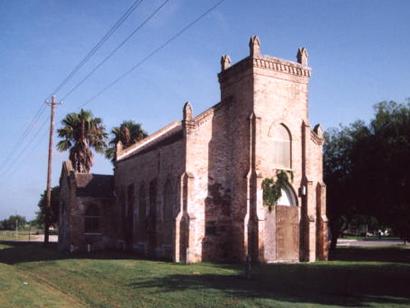
History in a Pecan Shell
The area was included in the Jos� de Escand�n colony in the 1750s. In 1777 the land was awarded to Rosa Mar�a Hinojosa de Ball�. A chapel was built by the Oblate Fathers in 1824.
A post office was opened in 1878 and by 1880 the town was a stage stop and supported two schools. Four years later the estimated population was 500, but just two years later it had fallen to a mere 100 persons. In 1913 the San Benito and Rio Grande Valley Railway came through and made the town a stop.
Although the post office was closed in 1921 - it reopened in 1925. By 1931 the town had increased to 320 people who shopped at 16 stores. The population has see-sawed beween a low of 100 and a high of 281 from the 30s through the 70s. A colonia developed and by 1976 it had an estimated 776 people living there. By the mid 80s the colonia had increased to over 1,000 residents living on 25 acres. Santa Maria proper still reports a population estimate of around 200.
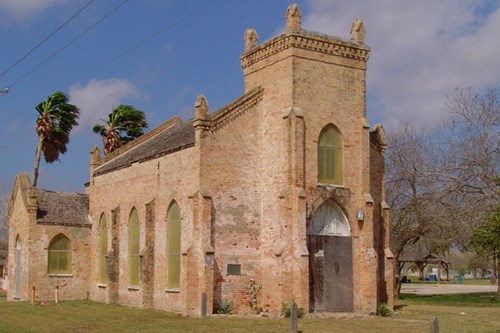

Our Lady Of Visitation architectural details
Photo courtesy Ken Rudine , February 2008
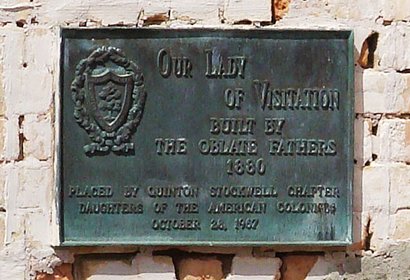

Longoria Cemetery marker
US 281 at FM 506
1.8 miles E of Santa Maria
Photo courtesy Ken Rudine , February 2008
Historical Marker:
Longoria Cemetery
The Longoria family were among the initial Spanish settlers to arrive in this region in the mid-1700s. Juan Rosas Longoria and Maria Salome Cano were among the men and women who founded permanent communities such as the Villa de Reynosa, establishing the Longoria family in the area. They and other pioneers introduced ranching into the area with techniques brought from southern Spain, many of which remained in use centuries later.
In 1831 Irineo Longoria increased the family landholdings north of the Rio Grande by purchasing portions of the LLano Grande, La Feria and Ojo de Agua land grants. He added these tracts to the land of his second wife, Maria Inez Cavazos. They established residence in the community of Santa Maria. The Longoria ranch stretched from what became Sebastian to the Rio Grande.
The family also farmed the land and participated in the early development of irrigation systems in the Rio Grande valley.
Juan Miguel Longoria (1815-1875) became the owner of the Longoria ranch in the mid-1800s. Married three times, he was the father of 17 children. His first wife was Soledad Cavazos. His second wife, Silveria Ruiz, became one of the first persons interred here upon her death before 1853. After his death, Juan Miguel's third wife, Teresa Guerra, became the family matriarch and managed the ranch from 1875 to 1909. Juan Miguel's grave is marked by an above-ground brick tomb.
By the late 1990s, the cemetery was in a state of disrepair. Longoria descendants organized to restore the site and its estimated 371 graves to ensure the endurance of the Longoria Cemetery as a chronicle of the diverse history and heritage of Texas.
(2000)
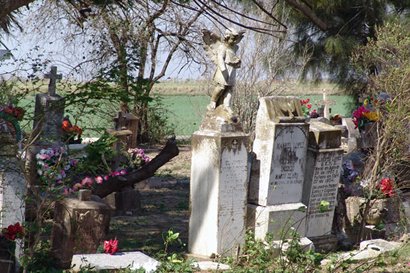
Longoria Cemetery Tombstones
Photo courtesy Ken Rudine , February 2008

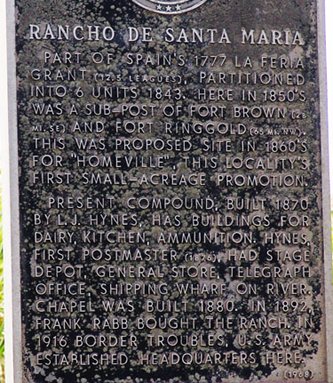
Rancho De Santa Maria Historical Marker
US 281, W of La Avenida Iglesia
Photo courtesy Ken Rudine , February 2008
Historical Marker:
Rancho De Santa Maria
Part of Spain's 1777 La Feria Grant (12.5 leagues), partitioned into 6 units 1843. Here in 1850's was a sub-post of Fort Brown (28 mi. SE) and Fort Ringgold (65 mi. NW). This was proposed site in 1860's for "Homeville", this locality's first small-acreage promotion.
Present compound, built 1870 by L.J. Hynes, has buildings for dairy, kitchen, ammunition. Hynes, first Postmaster (1876), had stage depot, general store, telegraph office, shipping wharf on river. Chapel was built 1880. In 1892, Frank Rabb bought the ranch. In 1916 border troubles, U.S. Army established headquarters here.
1968
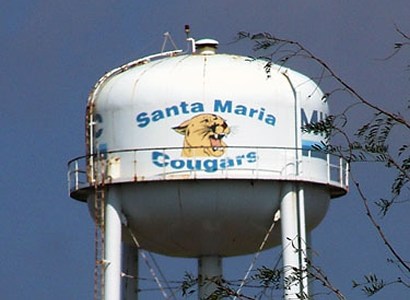
Texas Escapes, in its purpose to preserve historic, endangered and vanishing Texas, asks that anyone wishing to share their local history, stories, landmarks and recent or vintage photos, please contact us.